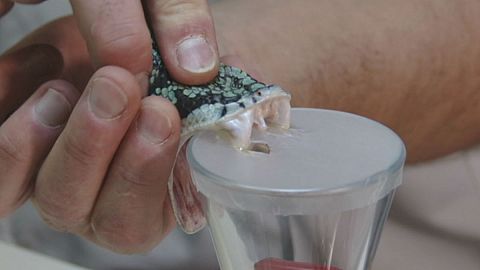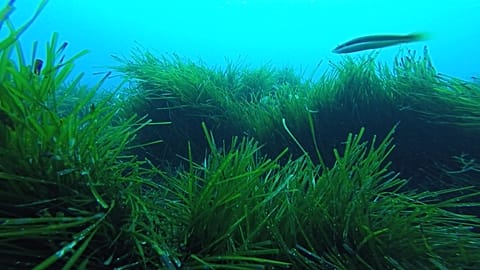Extremely venomous animals like snakes have long been feared and exterminated. What you are about to see in this report is that the same venom that
Extremely venomous animals like snakes have long been feared and exterminated. What you are about to see in this report is that the same venom that can kill us could eventually help treat diabetes, cardiovascular diseases, allergies or even obesity.
An unusual farm in southern Belgium houses around 200 extremely venomous species.
All these animals are carefully farmed with an ambitious research purpose in mind.
Until now snake venoms were mainly studied to find antidotes. But that is now changing-
Rudy Fourmy runs a company called ALPHA Biotoxine.
“We are currently using fundamental research to identify the substances in these venoms and find toxic properties we can turn into therapeutic potential,” he says.
“This venom comes from a dangerous viper from South America. It is a very active and powerful venom; a complex chemical cocktail. And we want to identify which of these components have a good potential to eventually develop new medicines,” says Chemical Biologist at Liege University Loïc Quinton.
Scientists from a European research project used mass spectrometry and other complex techniques to identify toxins from 203 venomous species. More than 4000 of these mini-proteins were newly classified.
“What we obtain on the computer screen is a graphic description of the molecular composition of each venom sample that we analyze. Different components are identified and classified according to their masses. Each peak relates to a toxin,” says Quinton.
Once identified, these toxins were then produced through extremely complex biological and synthetic processes.
“At the end of our process, we obtain a resin; you can watch it here. This resin is later treated so we get a synthetic product that is then going to be shaped to obtain the toxin that will finally be tested,” says the boss of CEA Saclay, Chemist Gilles Mourier.
The obtained toxins were then indeed tested by screening them against selected molecular targets. Results were promising, researchers say; venom-based drugs against some diseases are not a matter of Science Fiction anymore.
“We´ve chosen to focus on diseases like diabetes or obesity. In these two domains we still need to develop new medicines, says CEA Saclay/Venomics Project coordinator, pharmacologist Nicolas Gilles.
“Discovery and characterization processes take around 2-3 years. Then you need another 10 or 15 years to develop, test and certify new medicines, prior to their eventual commercialization”.
As well as the health benefits, researchers hope their work will somehow lead to a change in our attitudes to fearful yet eventually beneficial creatures
“Most of these animals are endangered; they suffer illegal hunting, their natural ecosystems are being destroyed. If we can show that these animals can also be useful for us, maybe we’ll take better care of them, so they can eventually help improve our future health,” concludes Remy Fourmy.
www.venomics-project.eu


















